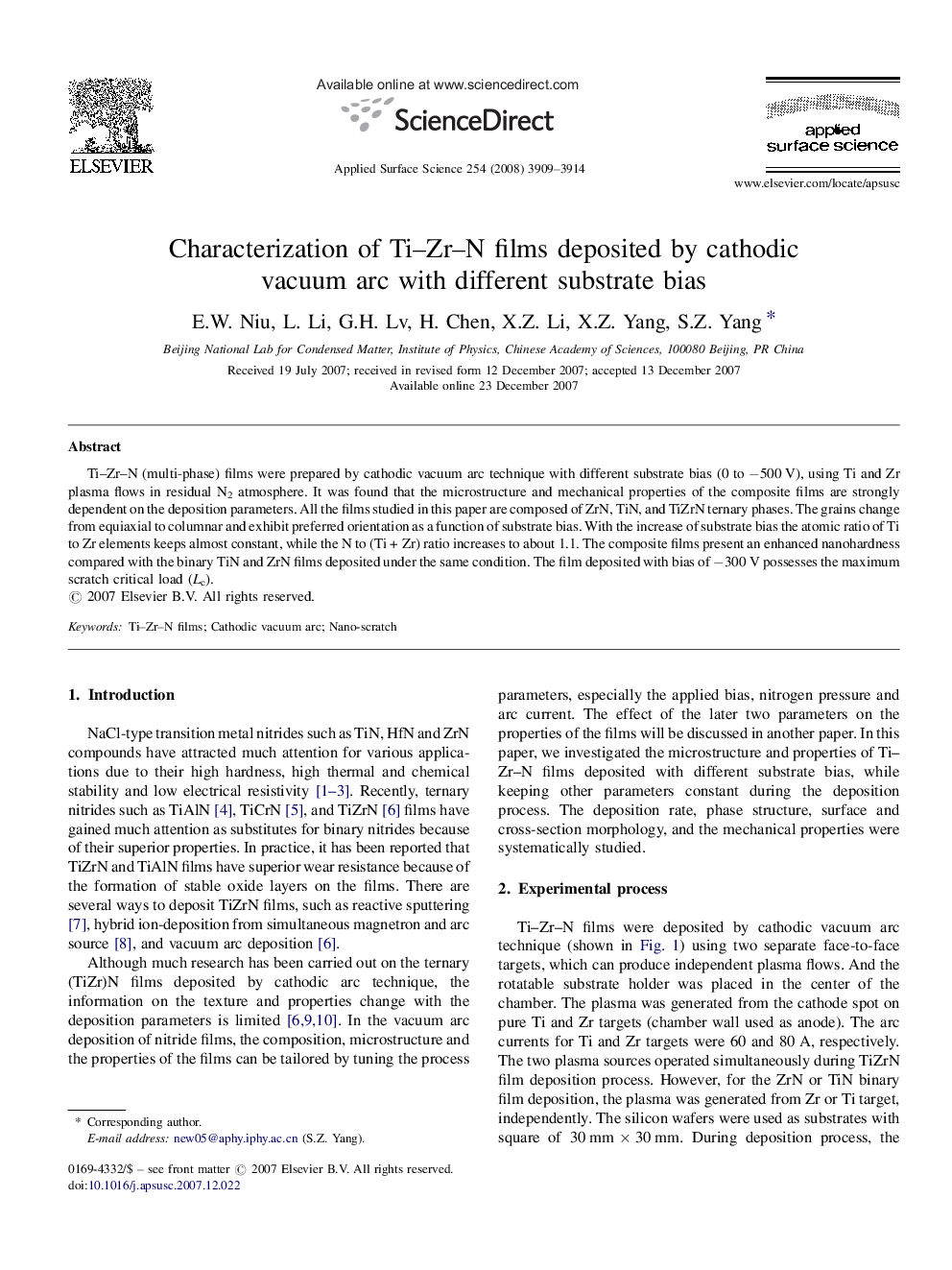| Article ID | Journal | Published Year | Pages | File Type |
|---|---|---|---|---|
| 5364627 | Applied Surface Science | 2008 | 6 Pages |
Abstract
Ti-Zr-N (multi-phase) films were prepared by cathodic vacuum arc technique with different substrate bias (0 to â500 V), using Ti and Zr plasma flows in residual N2 atmosphere. It was found that the microstructure and mechanical properties of the composite films are strongly dependent on the deposition parameters. All the films studied in this paper are composed of ZrN, TiN, and TiZrN ternary phases. The grains change from equiaxial to columnar and exhibit preferred orientation as a function of substrate bias. With the increase of substrate bias the atomic ratio of Ti to Zr elements keeps almost constant, while the N to (Ti + Zr) ratio increases to about 1.1. The composite films present an enhanced nanohardness compared with the binary TiN and ZrN films deposited under the same condition. The film deposited with bias of â300 V possesses the maximum scratch critical load (Lc).
Keywords
Related Topics
Physical Sciences and Engineering
Chemistry
Physical and Theoretical Chemistry
Authors
E.W. Niu, L. Li, G.H. Lv, H. Chen, X.Z. Li, X.Z. Yang, S.Z. Yang,
